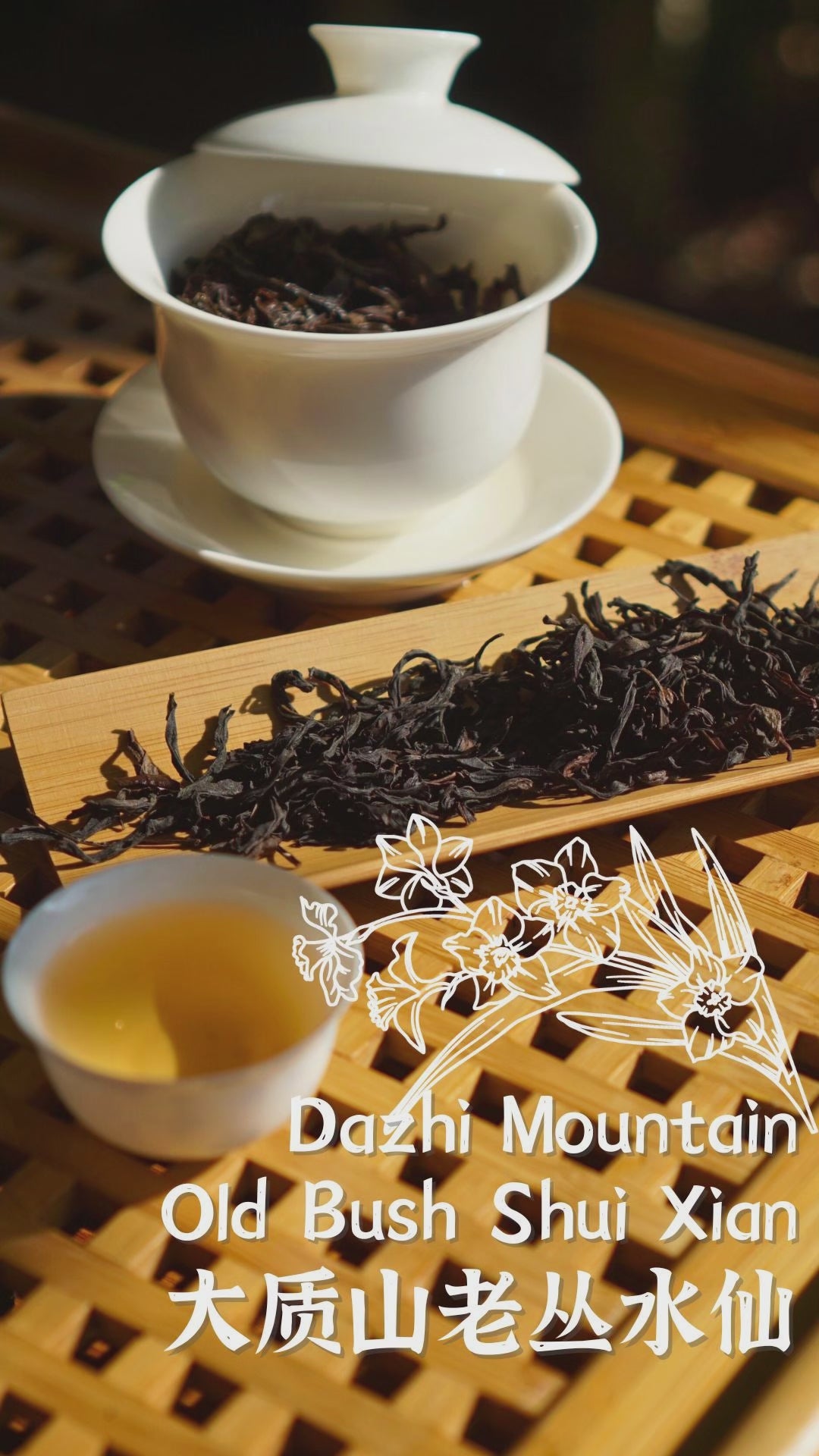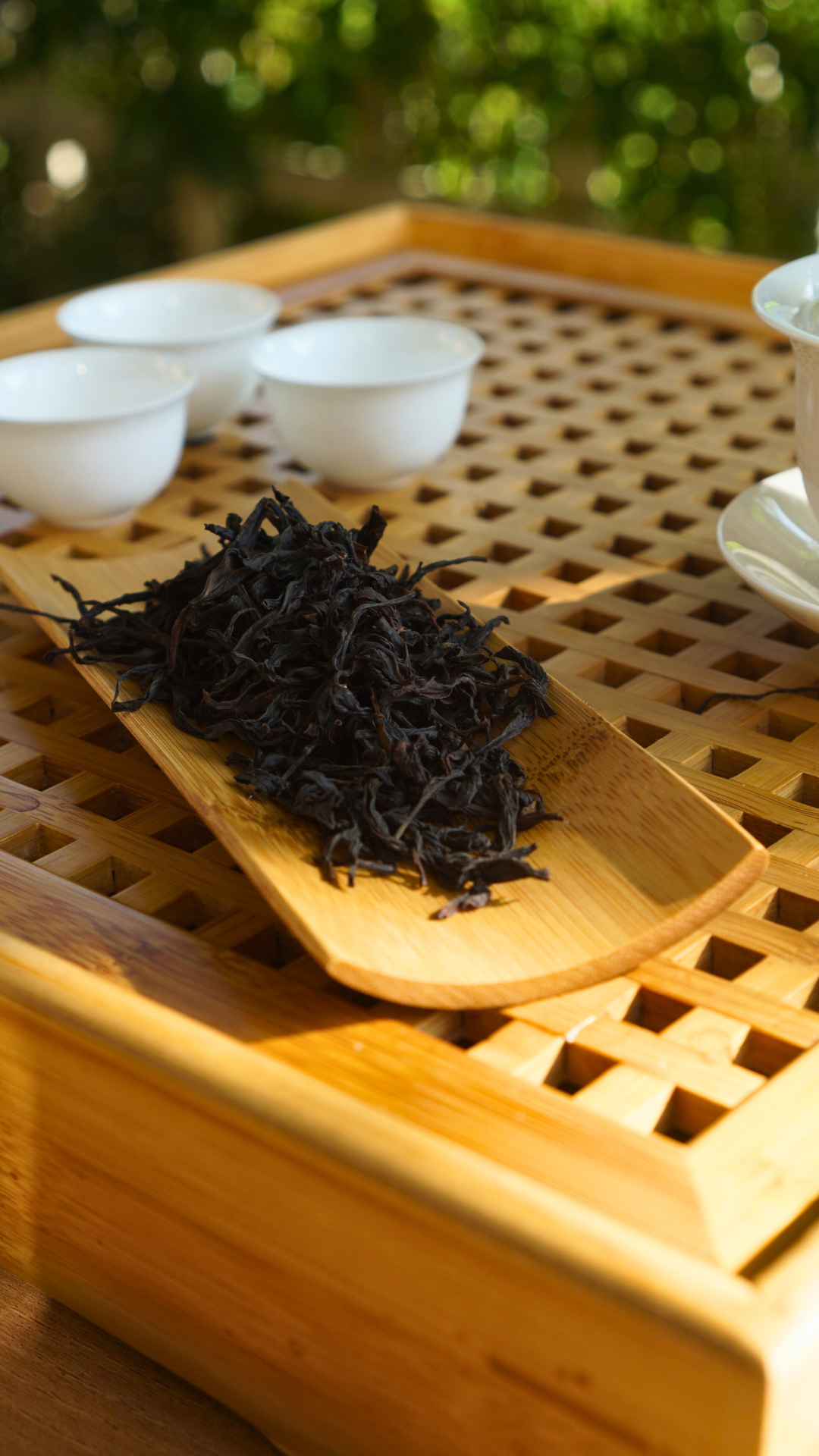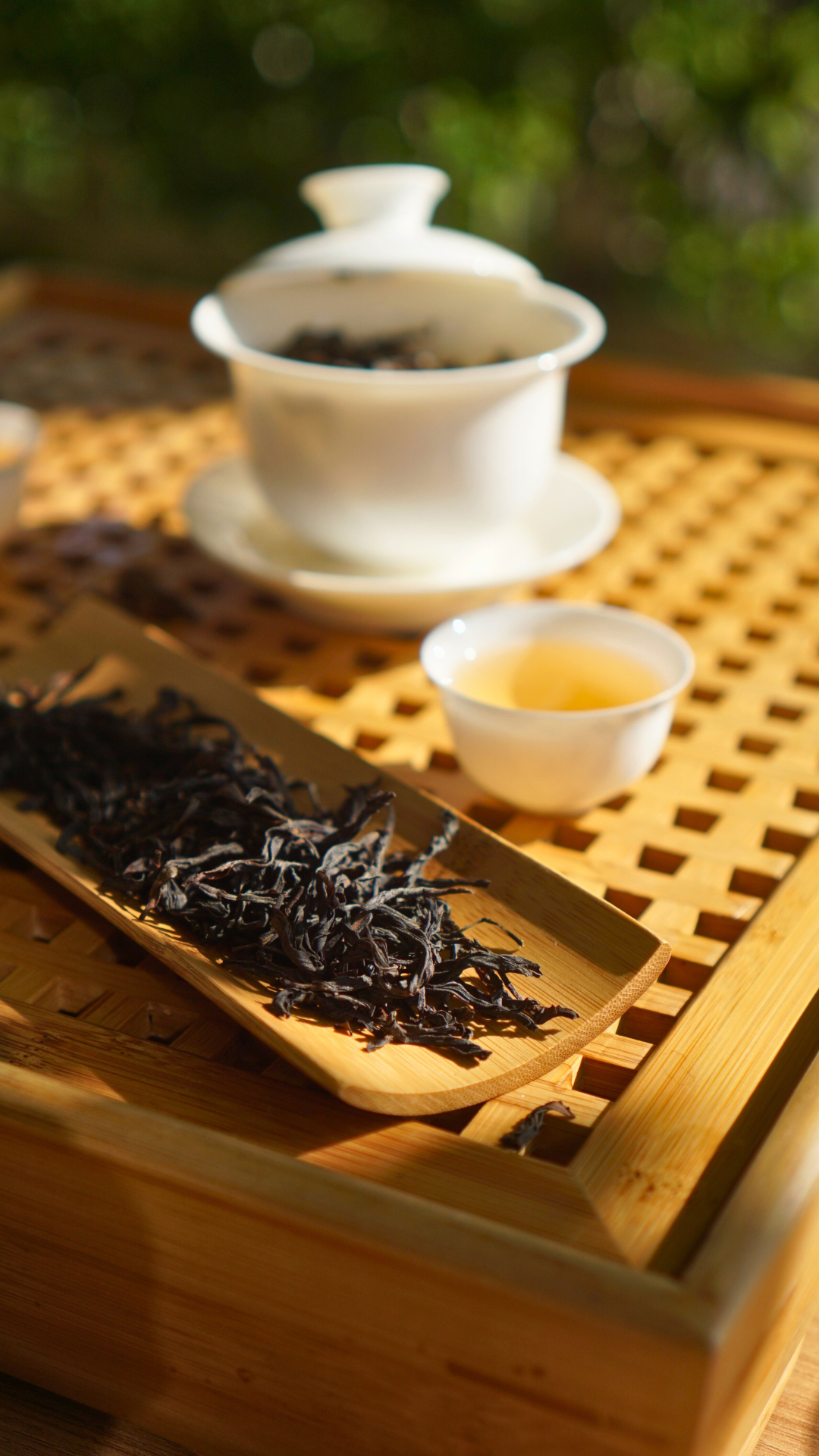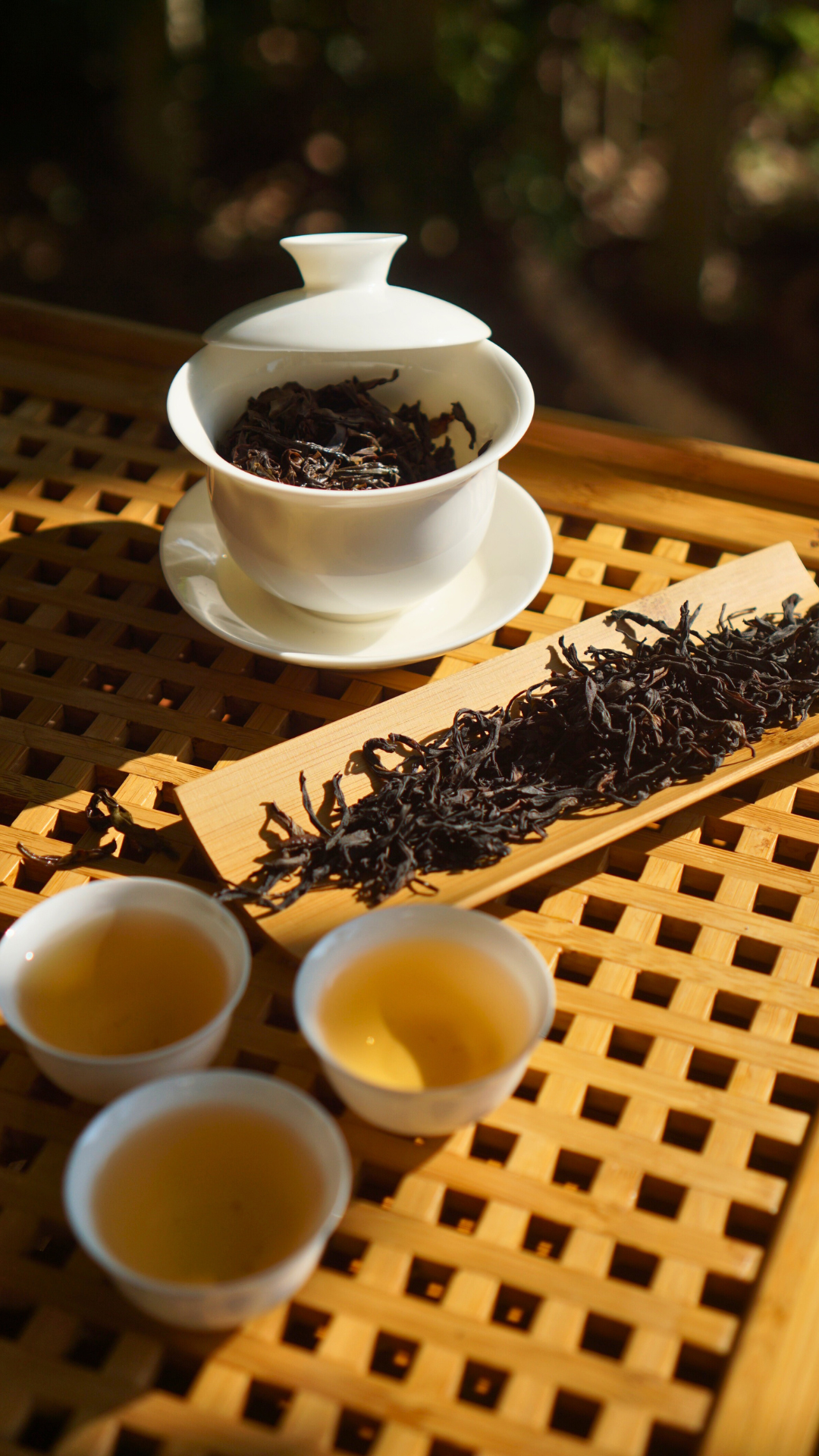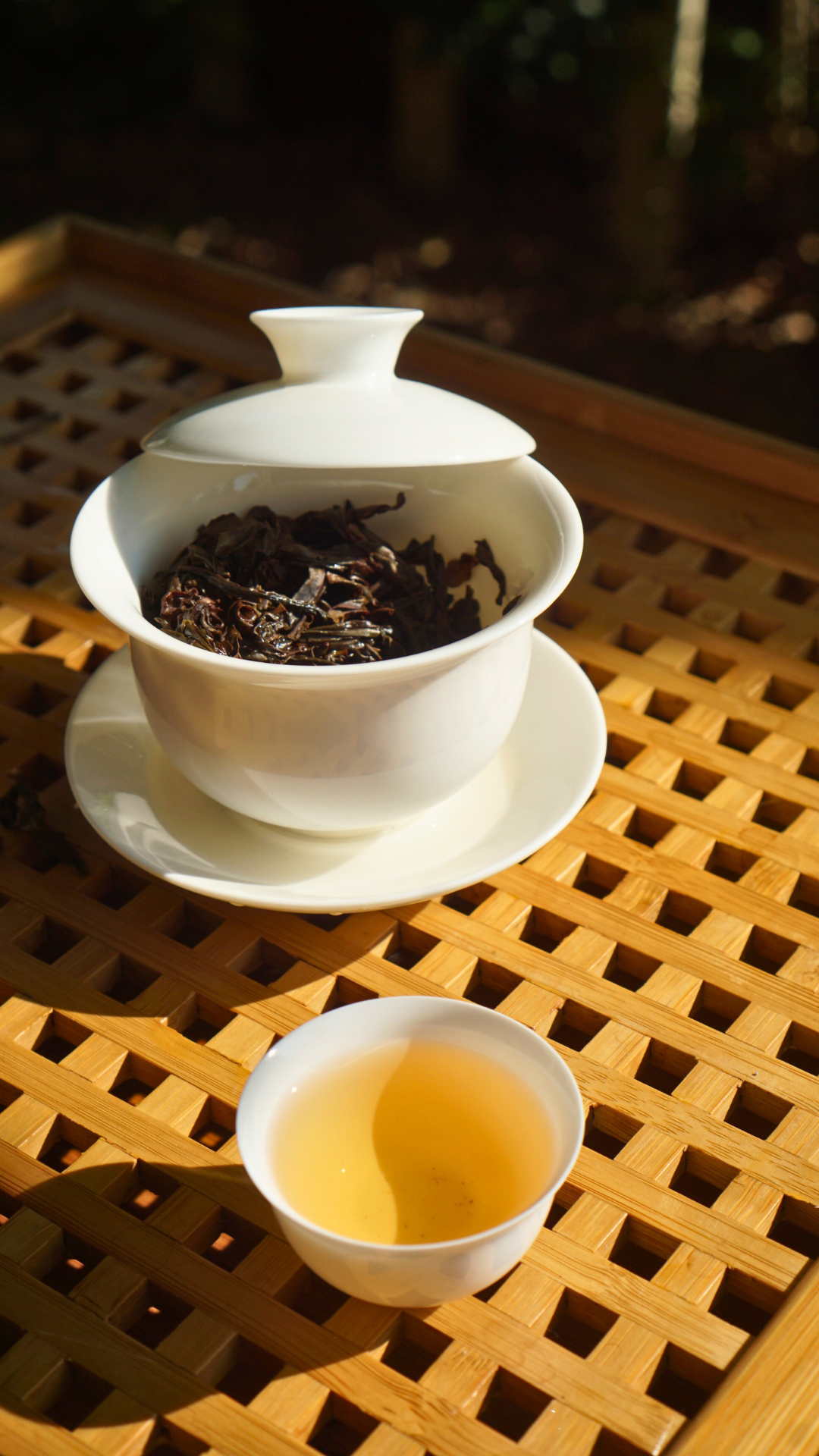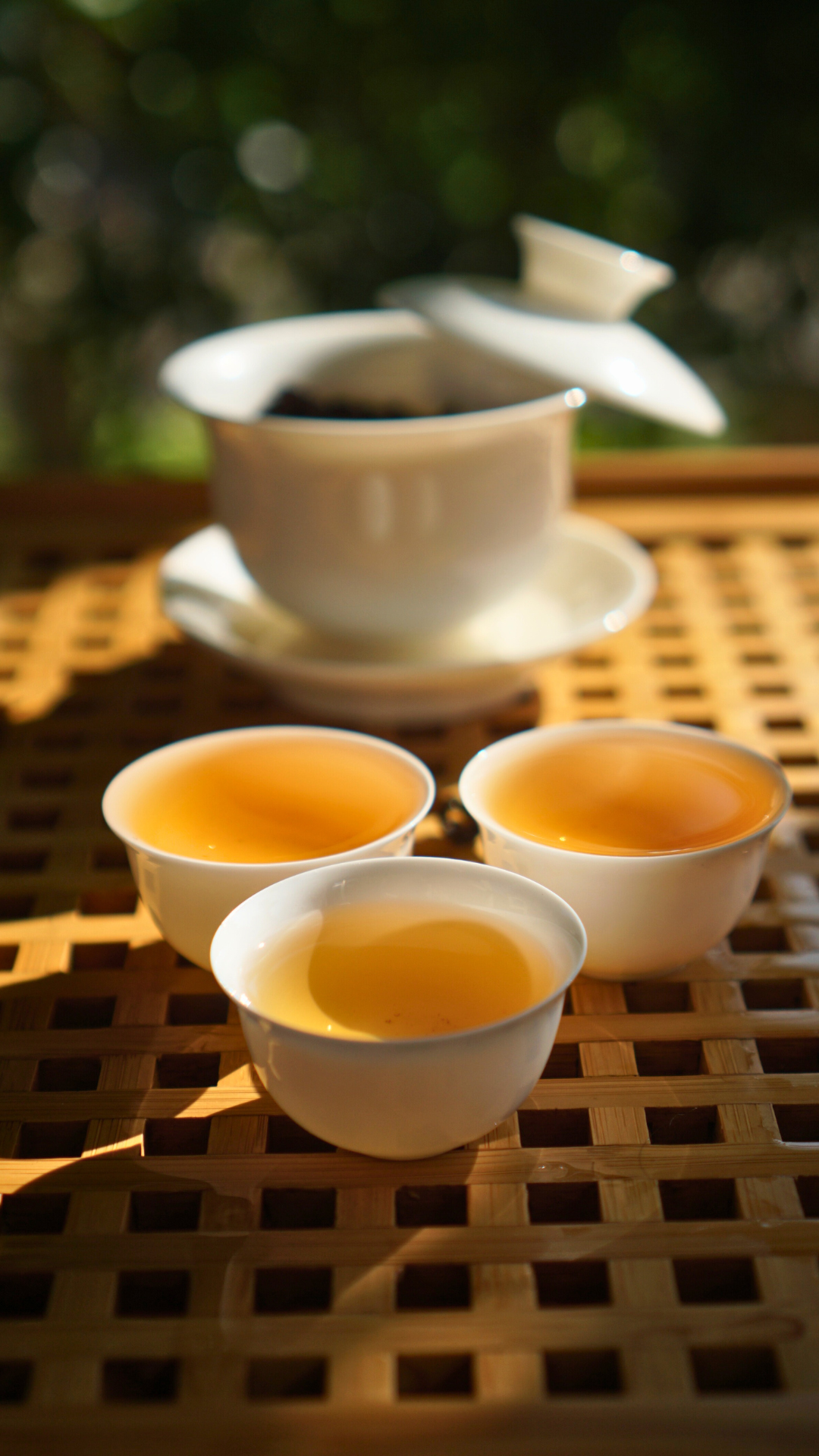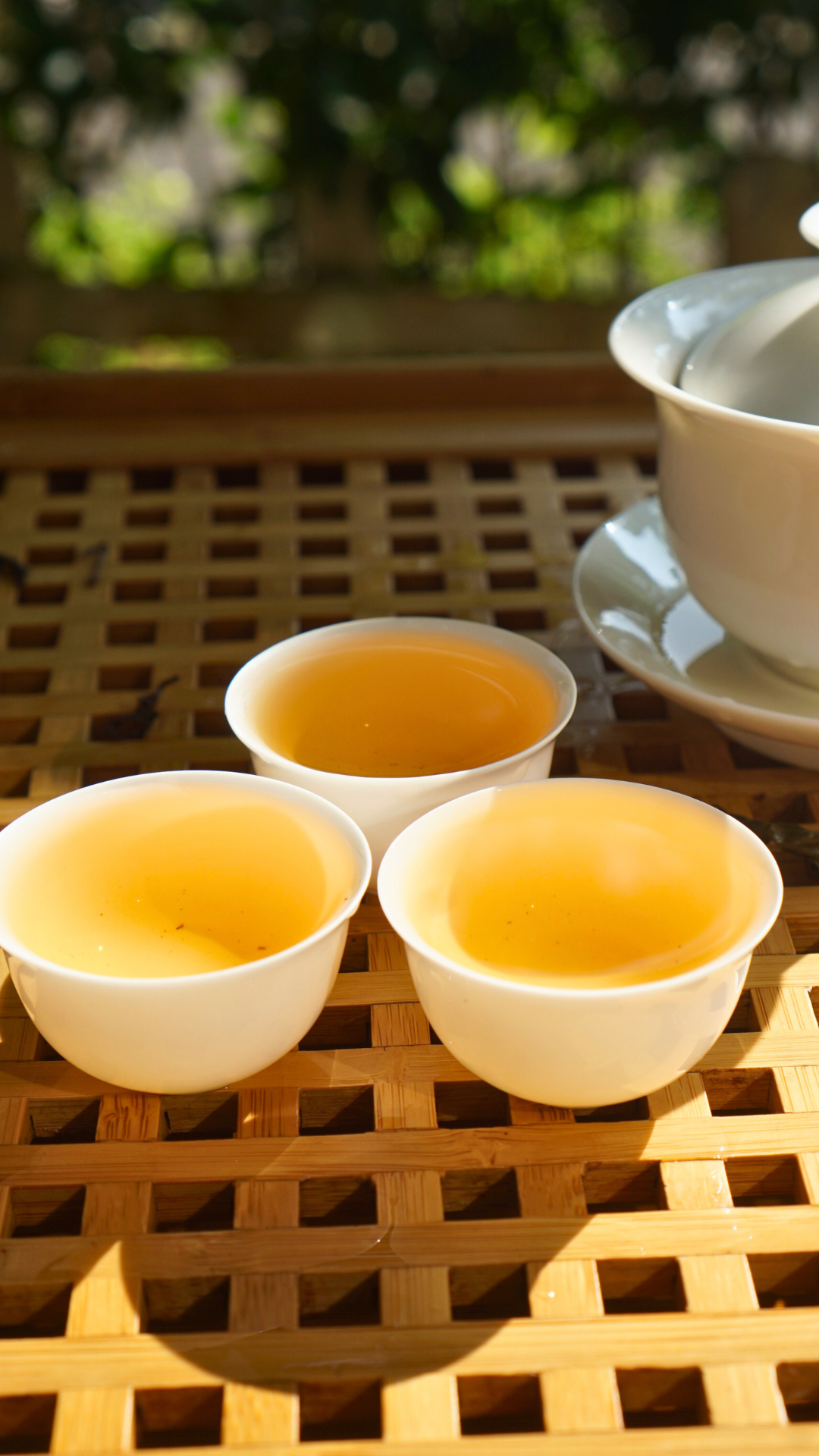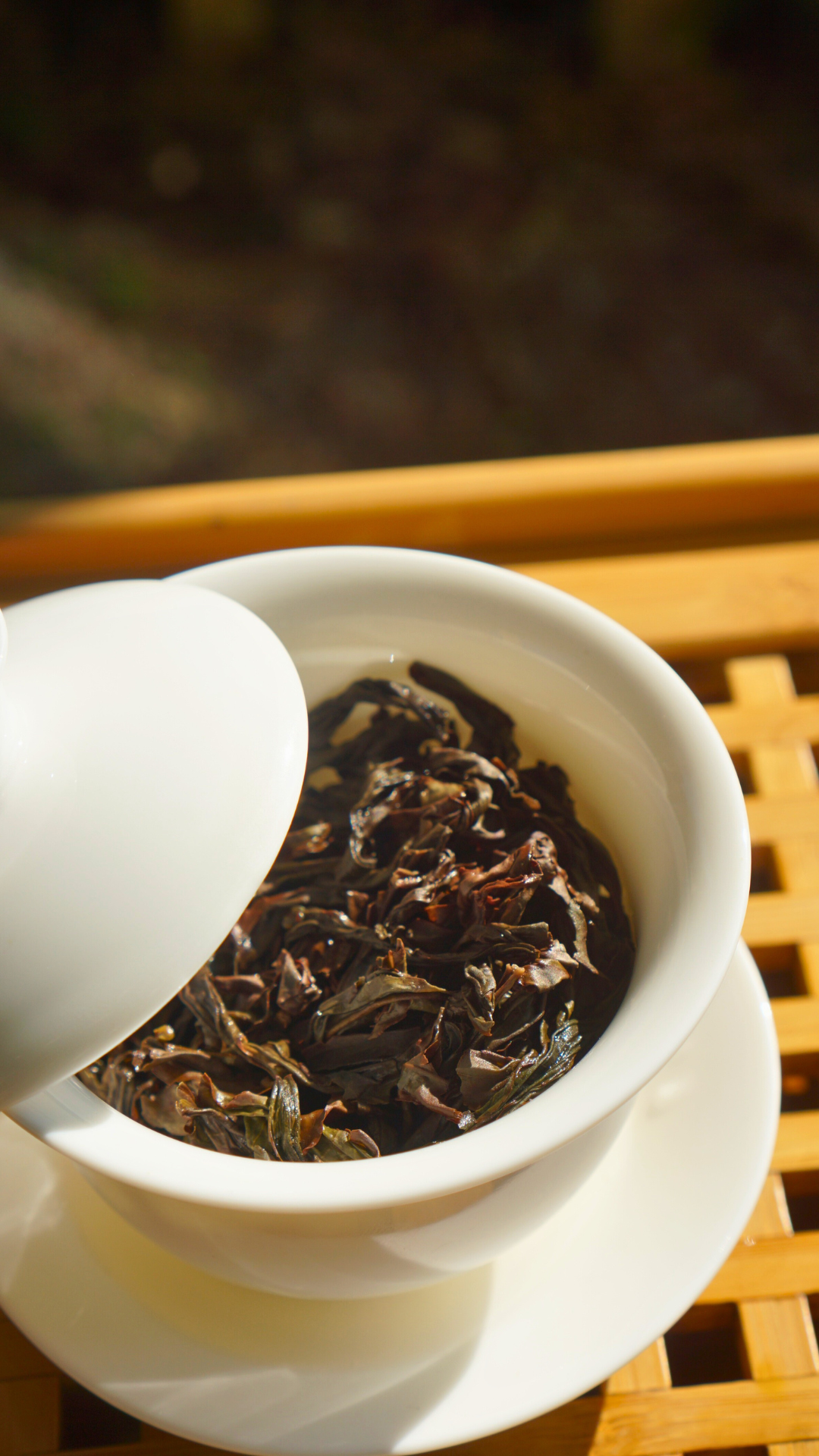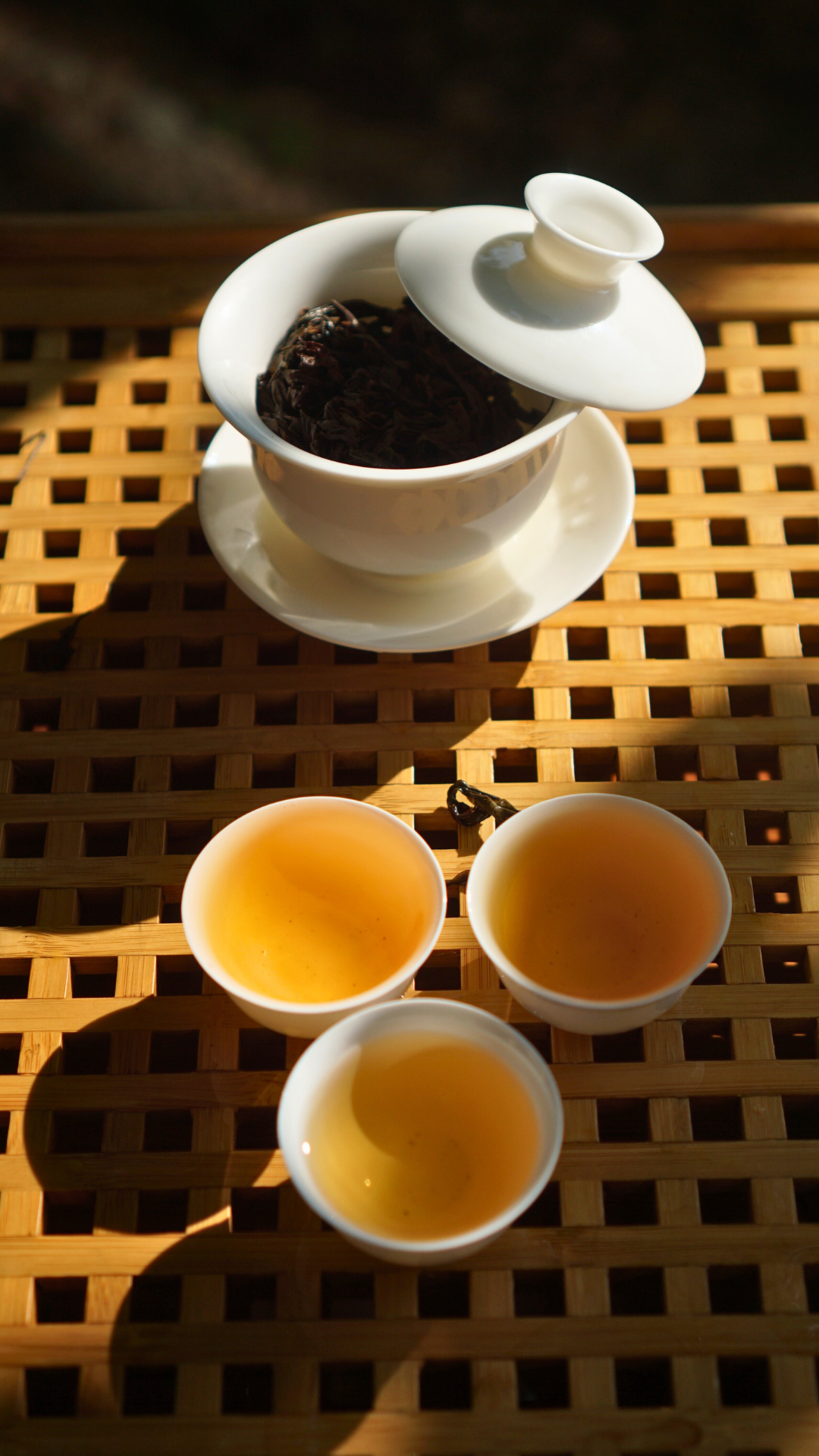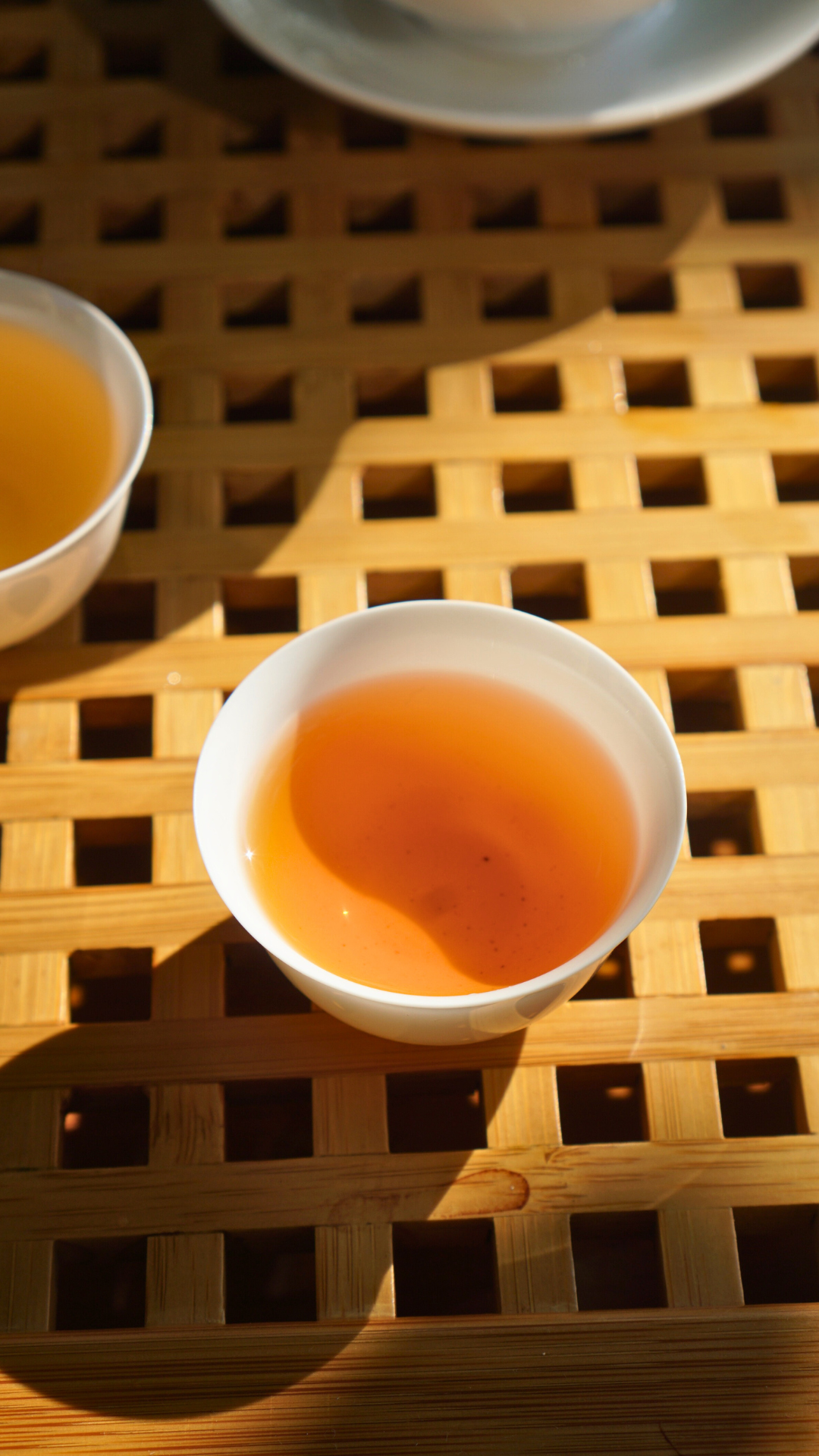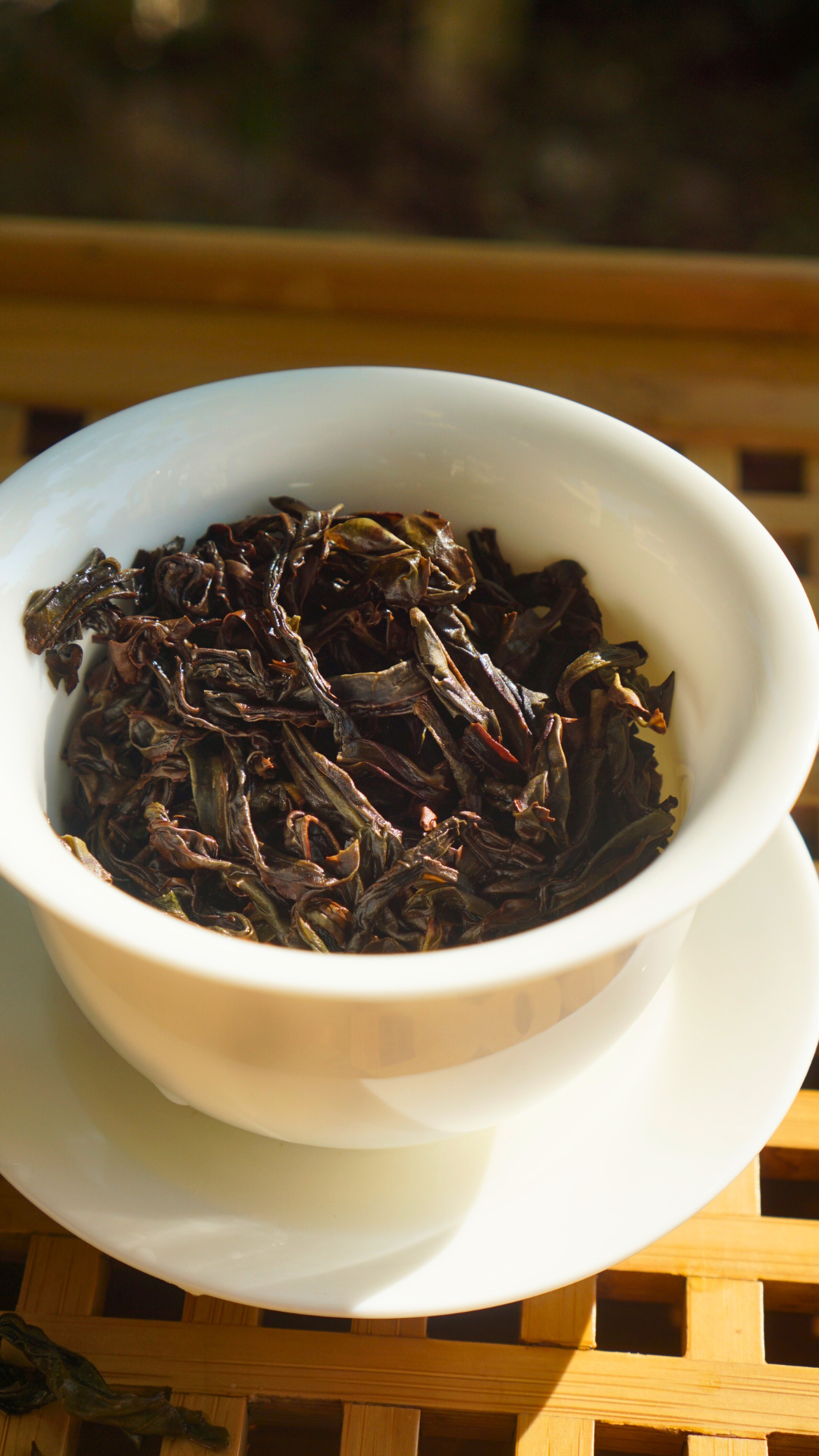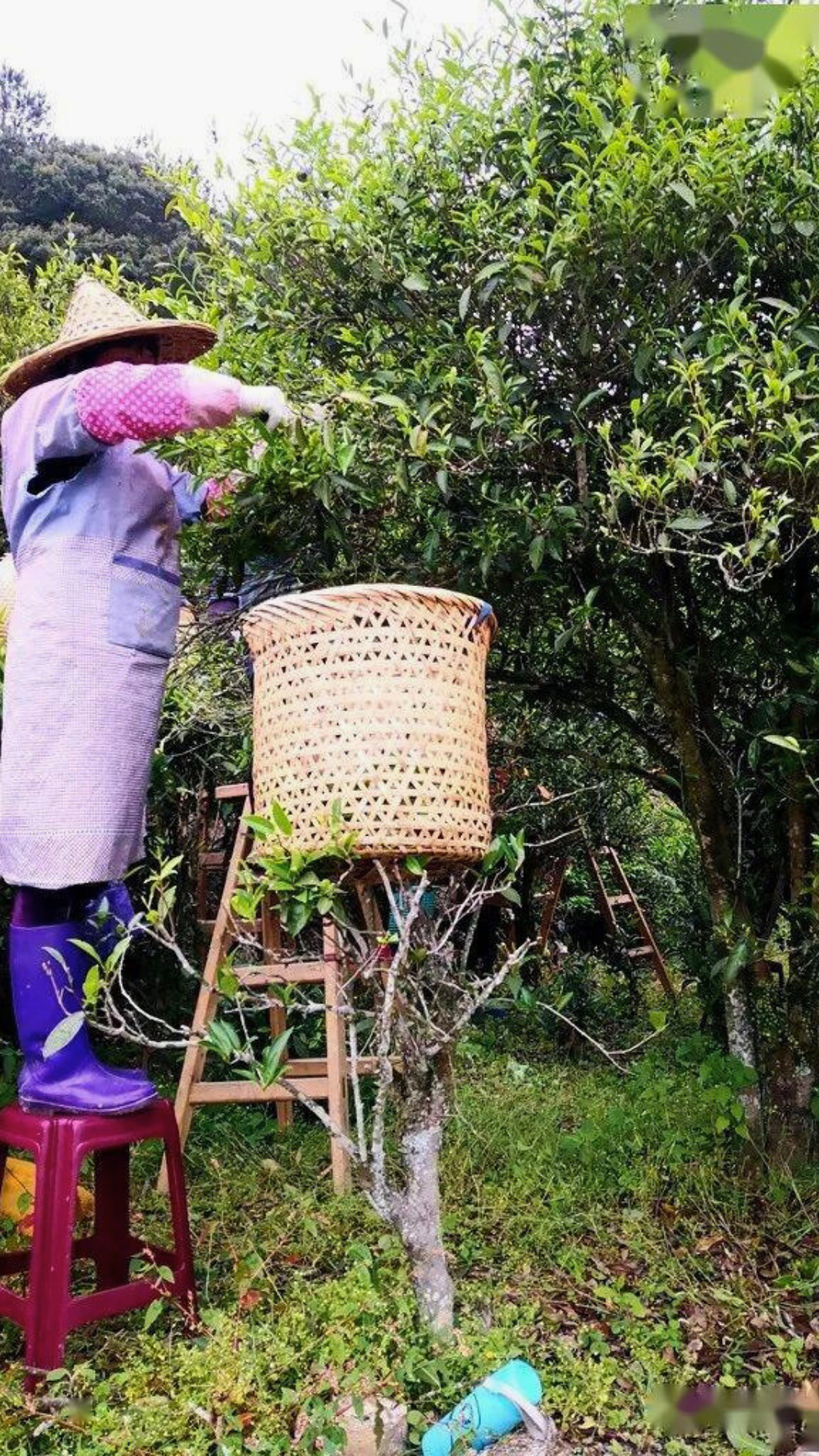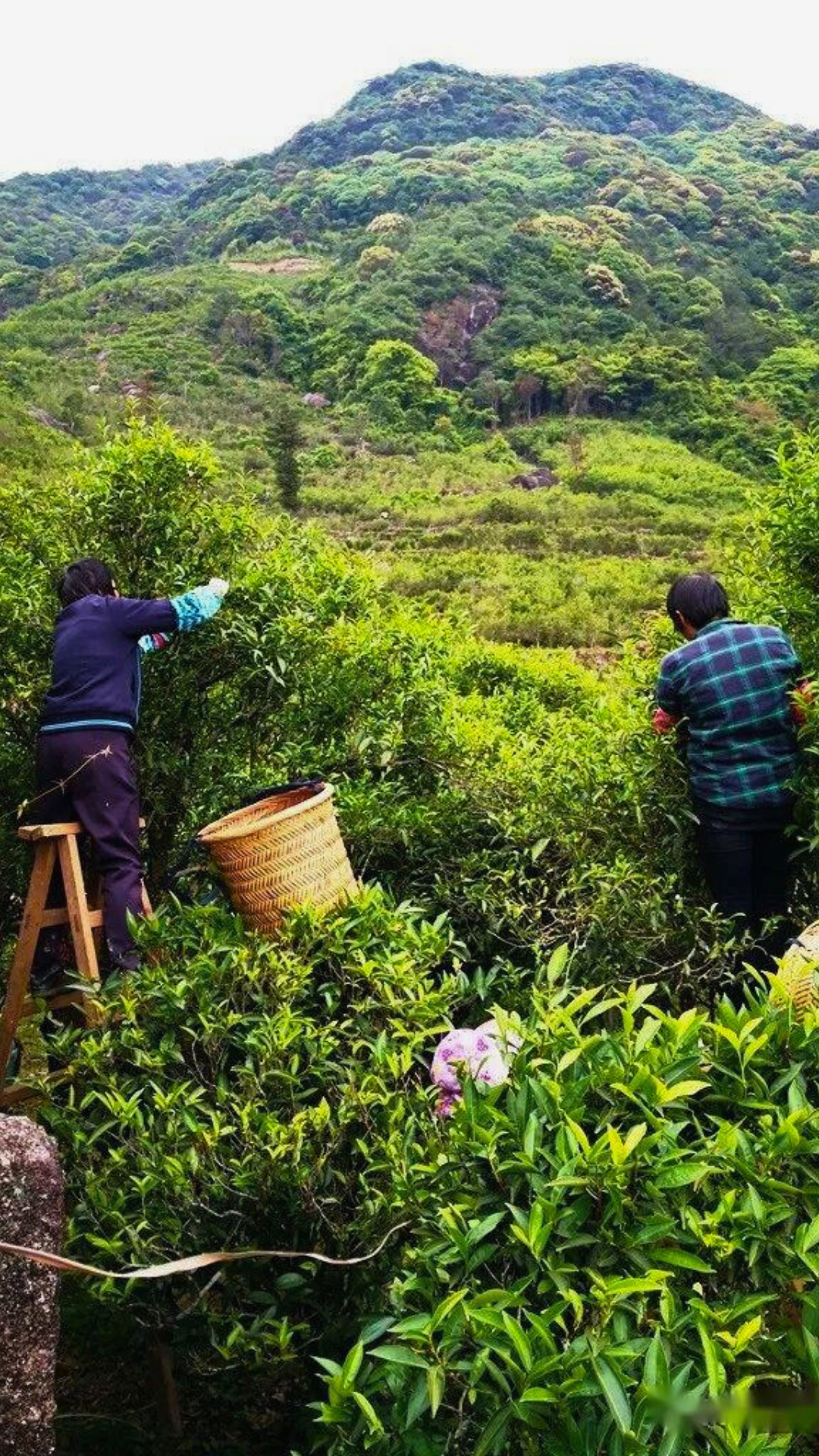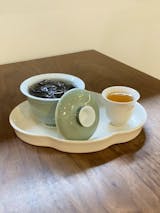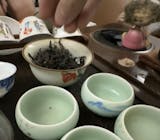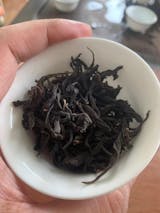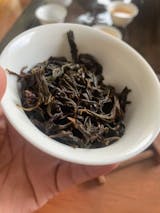Dazhi Mountain Old Bush Shui Xian
Dazhi Mountain Old Bush Shui Xian
大质山老丛凤凰水仙
This old bush Shui Xian tea comes from high-altitude tea gardens in Shiguping Village(石古坪村) at over 1,000 meters on Mount Dazhi(大质山) (also called Mount Daizhao 待诏山). The Shui Xian tea trees are all ancient trees over 100 years old. These old tea trees grow slowly in the mist-shrouded Mount Dazhi area, with deep, well-developed root systems and rich endoplasmic substance. This gives Shui Xian tea a unique mountain charm (山韵) and bush flavor (丛味).
This batch of old bush Shui Xian tea is of exceptional quality. The weather during the harvest was good, and the tea underwent withering under sunlight. It has a particularly mellow and enchanting aroma.
The dry tea leaves are black and glossy, with tightly rolled leaves emitting a thick, sweet aroma of dried longan with faint fruity and woody smoky notes.
The tea liquor is bright orange-yellow, with a mellow, smooth entrance. When savored slowly, the mountain charm is understated, the bush flavor lingers, and the aftertaste is potent, particularly in the first few brews, with a distinct lingering sweetness and a rich, sweet flavor that lingers in the mouth, creating a marvelous experience.
Old bush Shui Xian tea has excellent steeping endurance, maintaining smooth tea liquor and lasting fragrance even after 20 infusions.
*For first-time beginners, it is recommended to reduce the amount of tea leaves to avoid bitterness or astringency in the tea liquor.
About "Shui Xian"
The term Dan Cong (single-bush) tea is actually a relatively modern concept. Tea cultivation and production in the Chaoshan(潮汕) area can be traced back over a thousand years. Initially, the Chaoshan region had only two tea tree varieties: Wu Long(乌龙) and Hong Yin(红茵).
Wulong refers to the wulong tea tree variety, which is now exclusively grown in Shiguping Village(石古坪村) on FengHuang Mountain, preserving both its large-leaf and fine-leaf strains.
Hongyin tea refers to wild tea trees native to FengHuang. It is the predecessor of cultivated Bird’s Beak tea(鸟嘴茶) and gets its name from the mottled colors at the tips of its young leaves. Hongyin tea has a sharp aroma, a bittersweet flavor with a strong aftertaste, and is also highly steeping resistant.
Through cultivation, Hongyin tea gave rise to a new variety called Bird’s Beak tea(鸟嘴茶). It is said to be named either for the leaf tips resembling a bird’s beak or from a legend about Emperor Song Zhao Bing(赵昺), who, while on the run from Yuan soldiers, was offered tea from a bird on Mount Wudong(乌岽山) when he was dying of thirst. By the Hongzhi period of the Ming Dynasty, tea produced from Mount Daizhao (待诏山)(today’s Mount Dazhi, 大质山) was already a tribute tea, known as “Daizhao Tea(待诏茶).”
By the Republican era, Bird’s Beak tea gradually began to be called Shui Xian. Later, in 1956, it was officially named Feng Huang Shui Xian.
Unlike Dan Cong, fermented Shui Xian teas do not develop the complex, high-aroma profiles associated with Dan Cong during the shaking and oxidation processes (lang qing 浪青 and peng qing 碰青). Therefore, Shui Xian tea typically does not use these processes. When examining brewed Shui Xian tea leaves, you will not find the "green base with red edges" characteristic of Dan Cong oxidation.
Although Shui Xian does not have the high floral aromatics of Dan Cong, it has its own unique qualities. High-quality FengHuang Shui Xian tea is made from old bush tea trees that are all over a hundred years old, and sometimes over two hundred years old. These deep-rooted trees grow slowly on misty, high-altitude mountains, leading to long lifespans and the unique mountain charm and bush flavor.
Because Shui Xian tea does not undergo lang qing or peng qing, it has a lower degree of fermentation than Dan Cong and therefore contains a higher amount of tea polyphenols. However, excessive tea polyphenol content often results in bitterness and astringency in the tea liquor.
During the roasting process, tea polyphenols are reduced through exposure to high heat. Thus, Shui Xian tea often undergoes a heavier roast than Dan Cong during the final stages of processing to moderately reduce tea polyphenol content.
However, heavy roasting tends to result in stronger caramelized aromas, with higher levels of roasted, smoky, or char-like fragrance compounds. To balance this, heavily roasted FengHuang Shui Xian tea usually needs to be aged for six months or more—sometimes even several years—to allow the roasted flavors to dissipate and the tea’s profile to mellow and become smoother. This process is called “de-fire” (退火), similar to the aging process for heavily roasted Wuyi Rock Tea. Aged FengHuang Shui Xian tea is typically called Chen Nian Shui Xian(Aged Shui Xian).
The key takeaway regarding heavy roasting is that it serves two purposes: reducing tea polyphenol content and preventing re-greening during storage.
After aging, high-quality old bush Shui Xian tea produces tea soup that is smooth, mellow, with restrained and profound aroma, rich taste, strong aftertaste, and lasting bush flavor. It is highly steeping resistant and remains a cherished favorite among seasoned tea lovers in the Chaoshan region.
Storage
Storage
After Phoenix Dancong tea is produced, we judge when it can be consumed based on the degree of roasting. Lightly roasted Dancong tea can be generally consumed after being stored for 3-5 days to allow the fire to dissipate. On the contrary, heavily roasted tea requires a longer time for the fire to subside, usually at least about a week.
Classification by Degree of Roasting:
Light-Fragrance Type
Refers generally to lightly roasted tea. The aroma is typically excellent within three months, and if stored properly, it remains outstanding for 2-3 years. Examples include Xuepian tea, autumn tea, and lightly roasted spring teas (commonly featuring varieties famous for their strong fragrance like Ya Shi Xiang, Da Wu Ye, Gong Xiang, Ye Lai Xiang, etc.).
Mellow-Fragrance Type
Refers generally to tea leaves roasted with medium heat. This type of tea typically exhibits both a rich aroma and a fresh fragrance, with a pleasant taste that is much loved by tea enthusiasts. With the increased degree of roasting, the aroma and flavor of the tea are brought to perfection, with the best drinking period being within three years. When properly sealed and stored, mellow-fragrance Dancong tea becomes smoother over two years, and its aroma deepens into the tea liquor.
Strong-Fragrance Type
Refers generally to tea leaves roasted with high heat. This type of tea requires a relatively long time for the fire flavor to dissipate, but the tea is suitable for longer storage. The best drinking period is generally between 3-5 years. The main varieties of this roasting style include Shuixian, Baxian, Mi Lan Xiang, Da Wu Ye, and Ao Fu Hou, among others.
Most Dancong teas share a common characteristic: they develop a richer taste over time due to post-fermentation. However, it’s somewhat oversimplified to claim that Dancong tea can be stored indefinitely. This is because after a certain storage period, the tea will begin to exhibit aged flavors. Typically, aged flavors become noticeable after more than five years, which is why we often recommend a storage duration of 3-5 years.
The moisture content of Phoenix Dancong tea after refinement is 3.5%~4.5%, not exceeding 5%, and it does not require refrigeration for storage. When storing at home, it is important to consider four factors: moisture-proofing, light-proofing, avoiding breakage, and odor prevention.
1. Using Sealable Purple Clay or Ceramic Containers
These types of containers, especially purple clay tea canisters, are the most suitable for storing loose Pu'er tea. They can block light, prevent moisture, and the unique breathability of purple clay vessels can assist in the transformation and aging of raw Pu'er tea.
First, clean the purple clay container thoroughly, and once it is dry, you can store loose Pu'er tea in it.
Note that while purple clay containers are excellent at blocking light and preventing moisture, you should still avoid direct sunlight to prevent the container from overheating. Also, due to the micro-porous structure of purple clay, it is essential to prevent the storage environment from containing odors.
2. Using Cardboard Boxes for Storage
Although purple clay containers are ideal for storing loose Pu'er tea, they can be expensive. If you need to store a large amount of tea, cardboard boxes are a viable alternative.
Choose boxes with good thickness and strength. First, place the loose Pu'er tea into clean, food-grade plastic bags or aluminum foil bags, and then place these into the cardboard box for storage.
*Storage Tips:*
Do not place the cardboard box directly on the floor, as it can absorb ground moisture. Ideally, place it on a shelf or inside a cabinet.
Avoid direct sunlight.
Avoid placing the cardboard box in environments with mixed odors, such as kitchens or dining areas.
- Loose Oolong Tea
- 500g/pouch
- Free Shipping
Couldn't load pickup availability
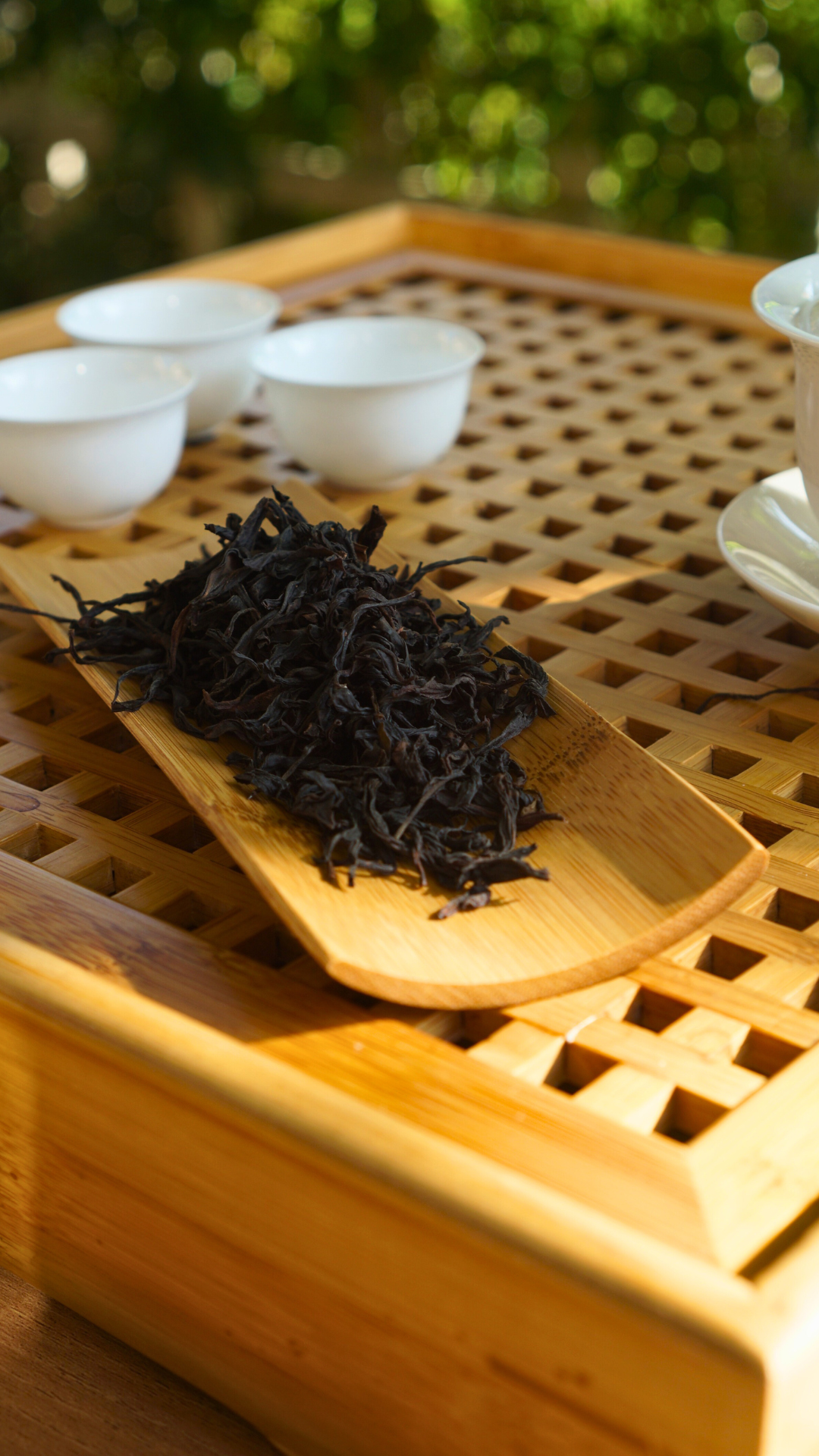
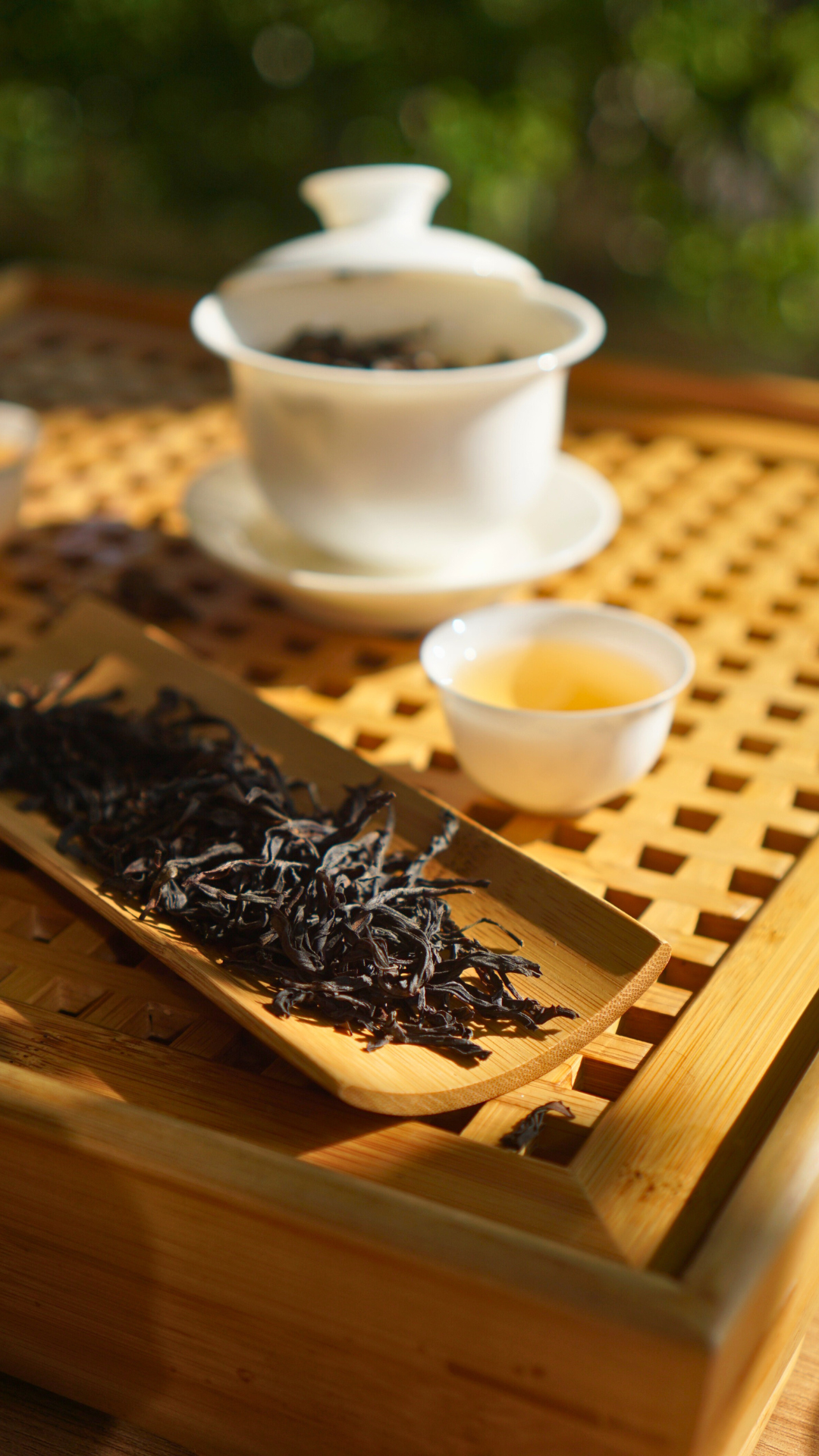
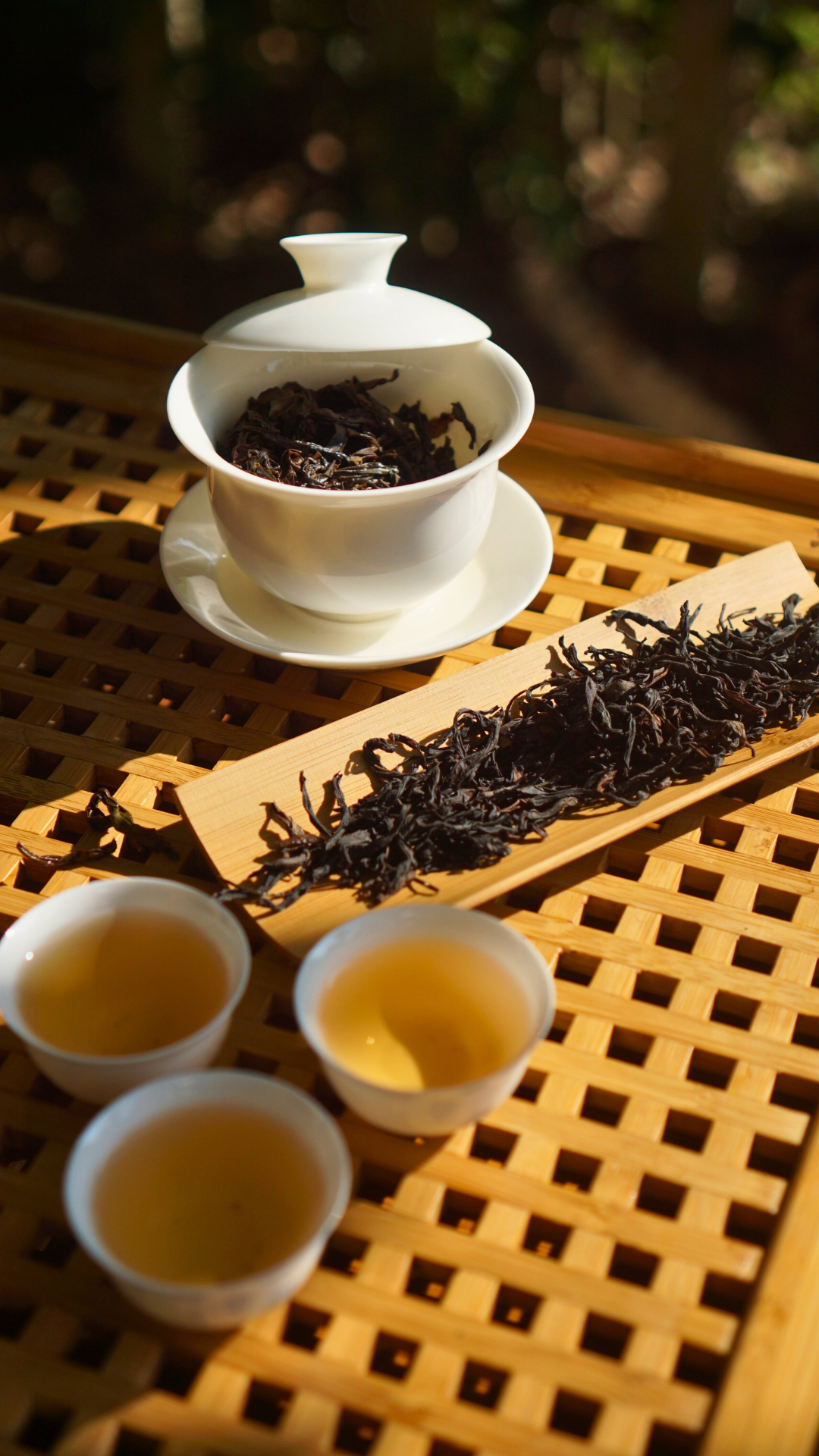
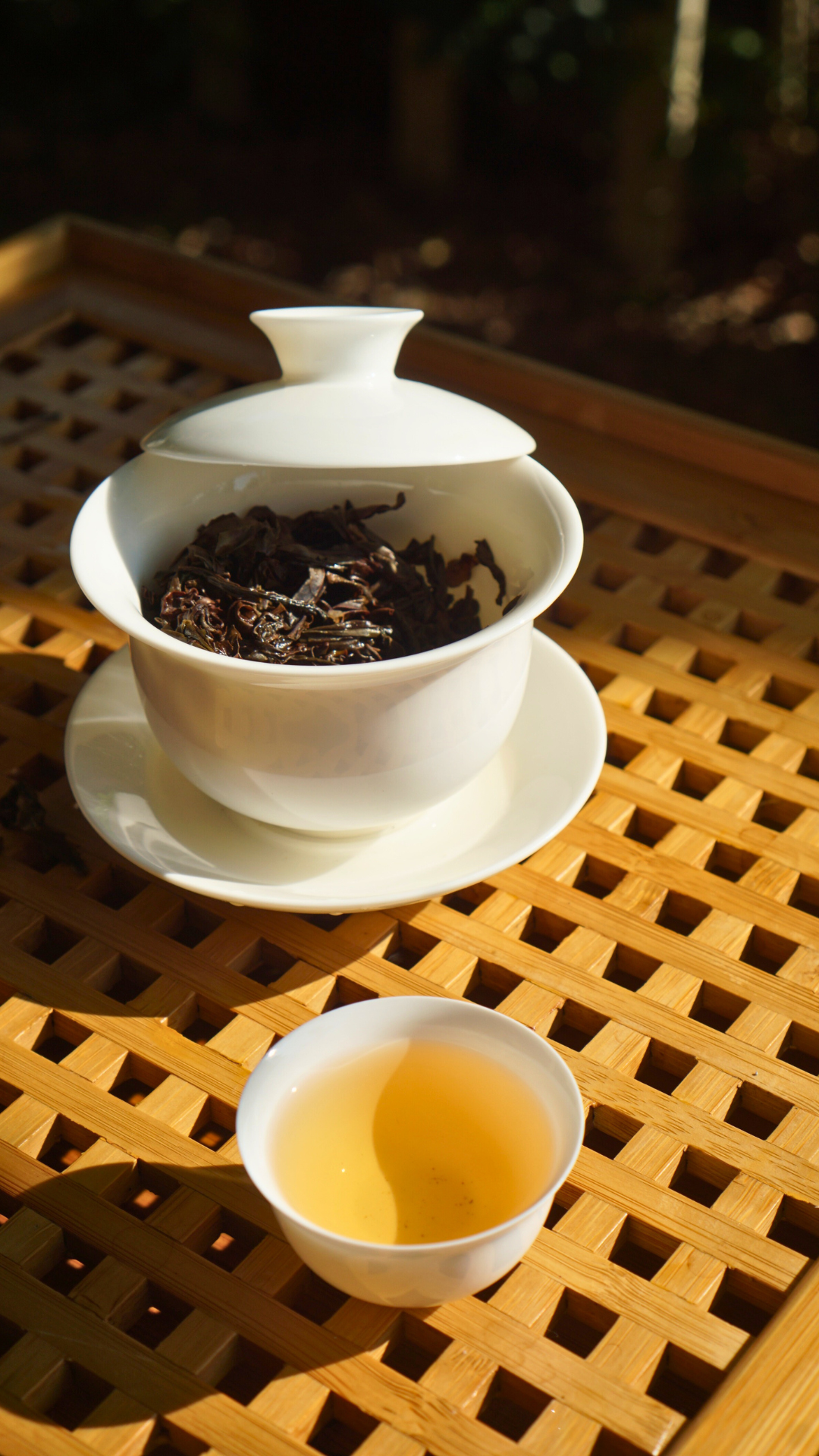
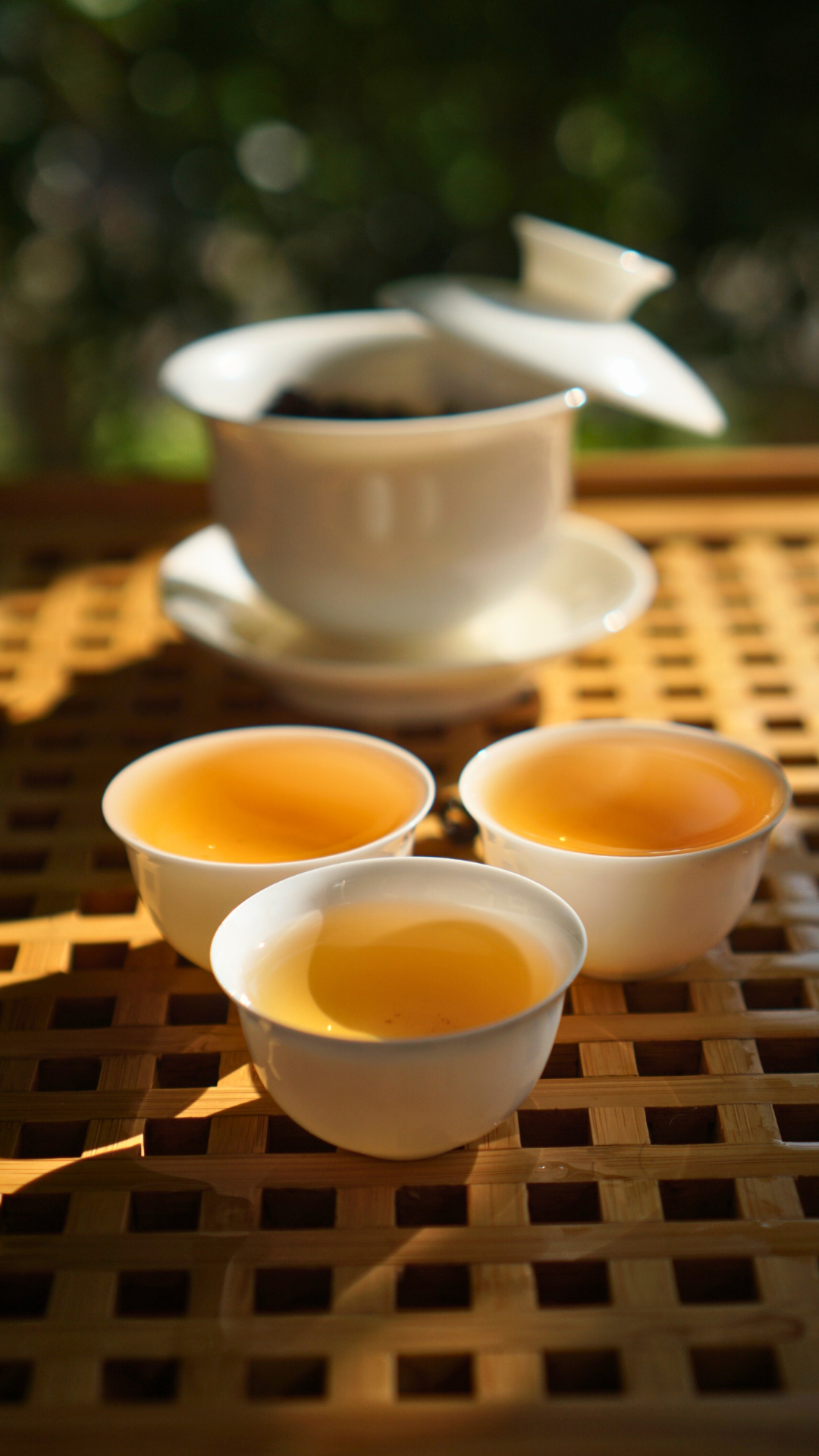
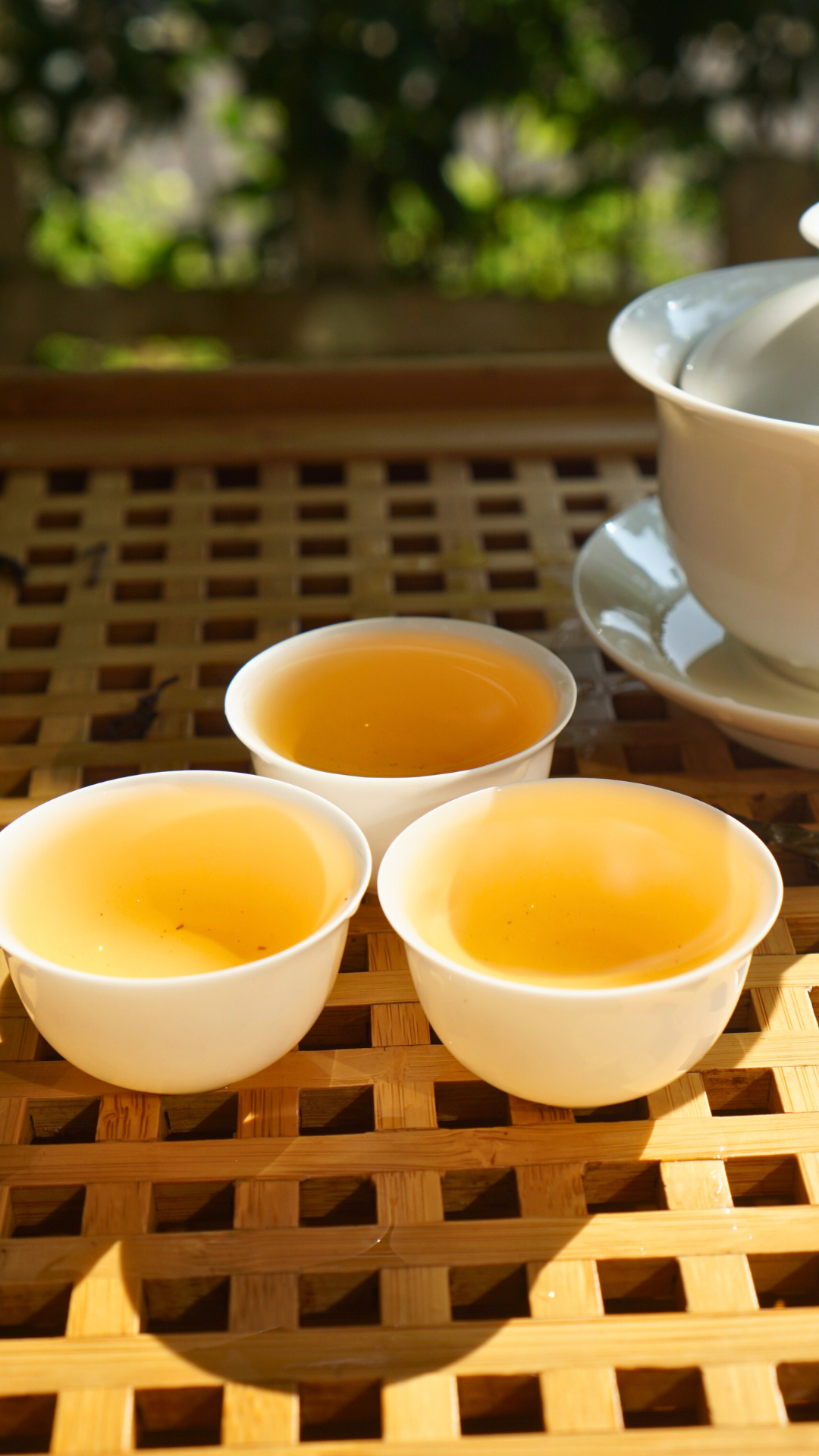
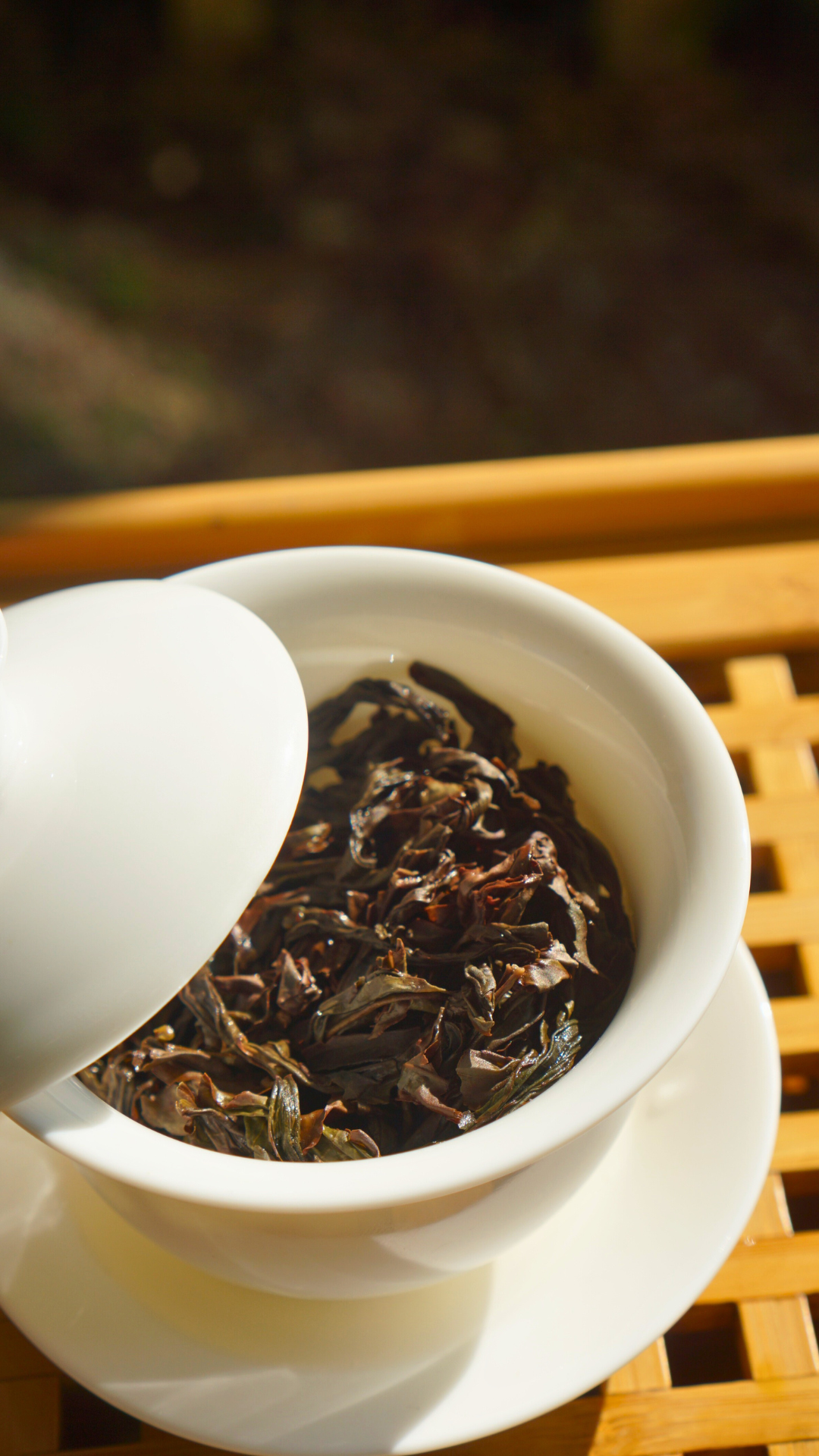
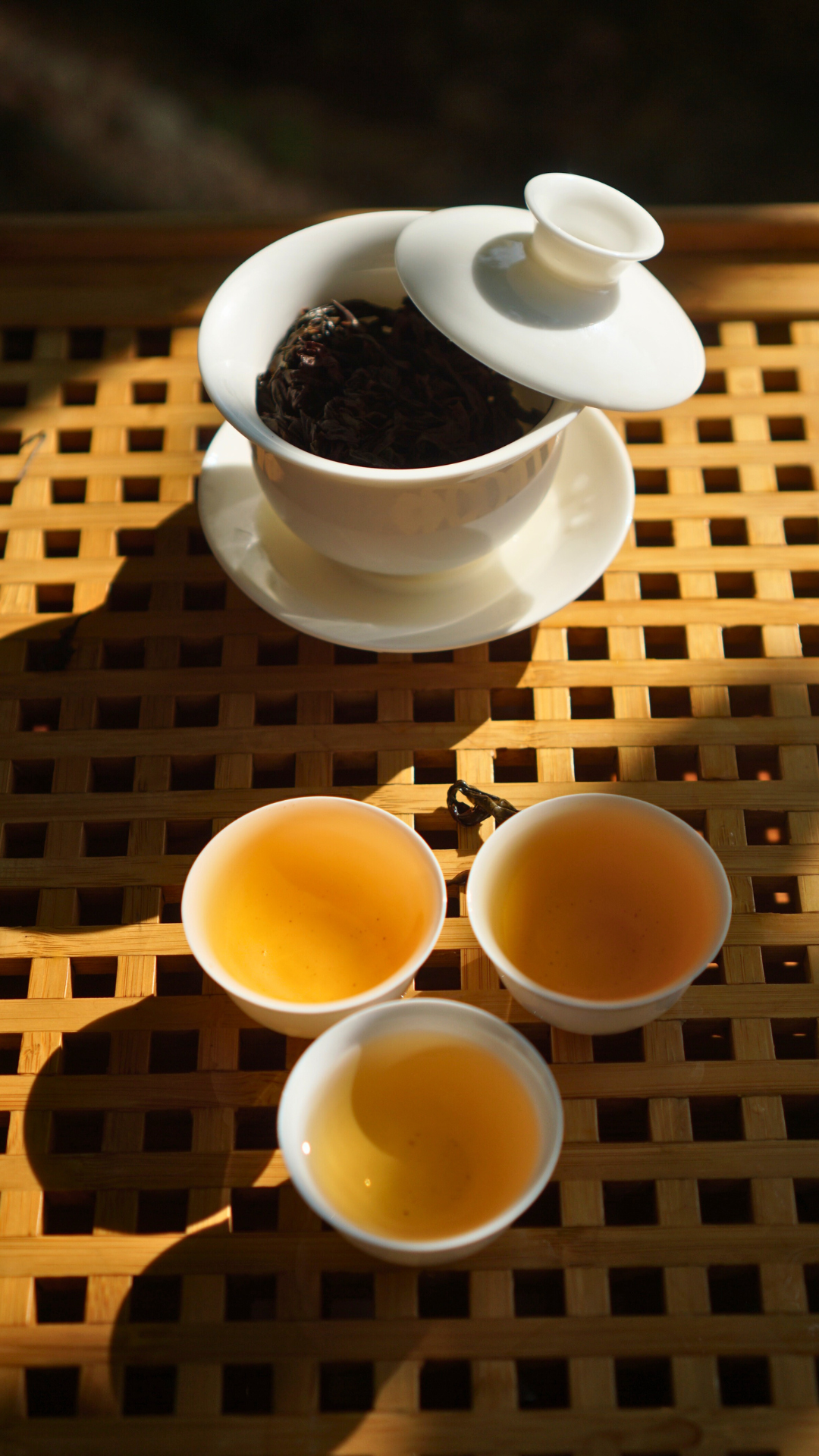
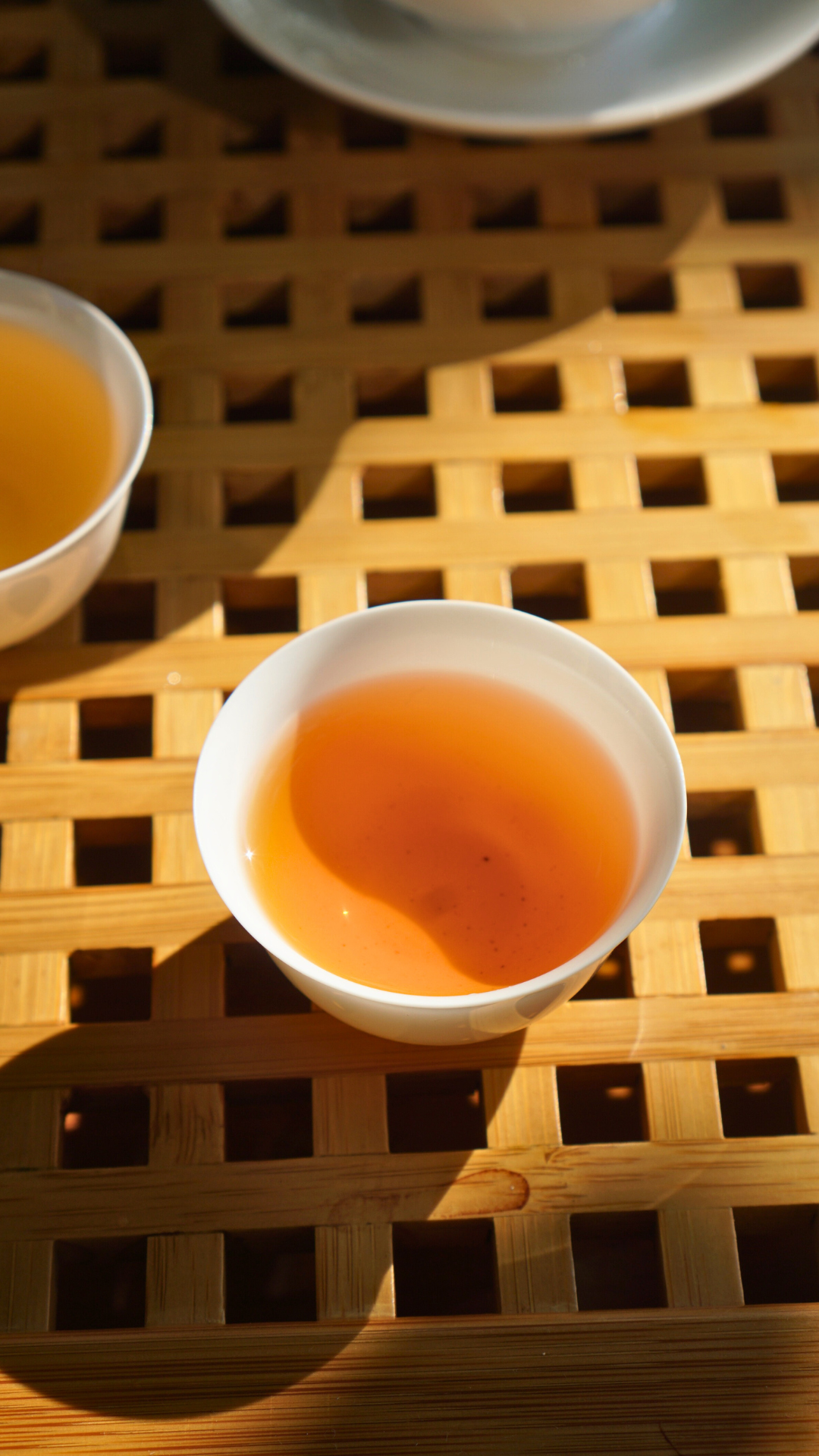
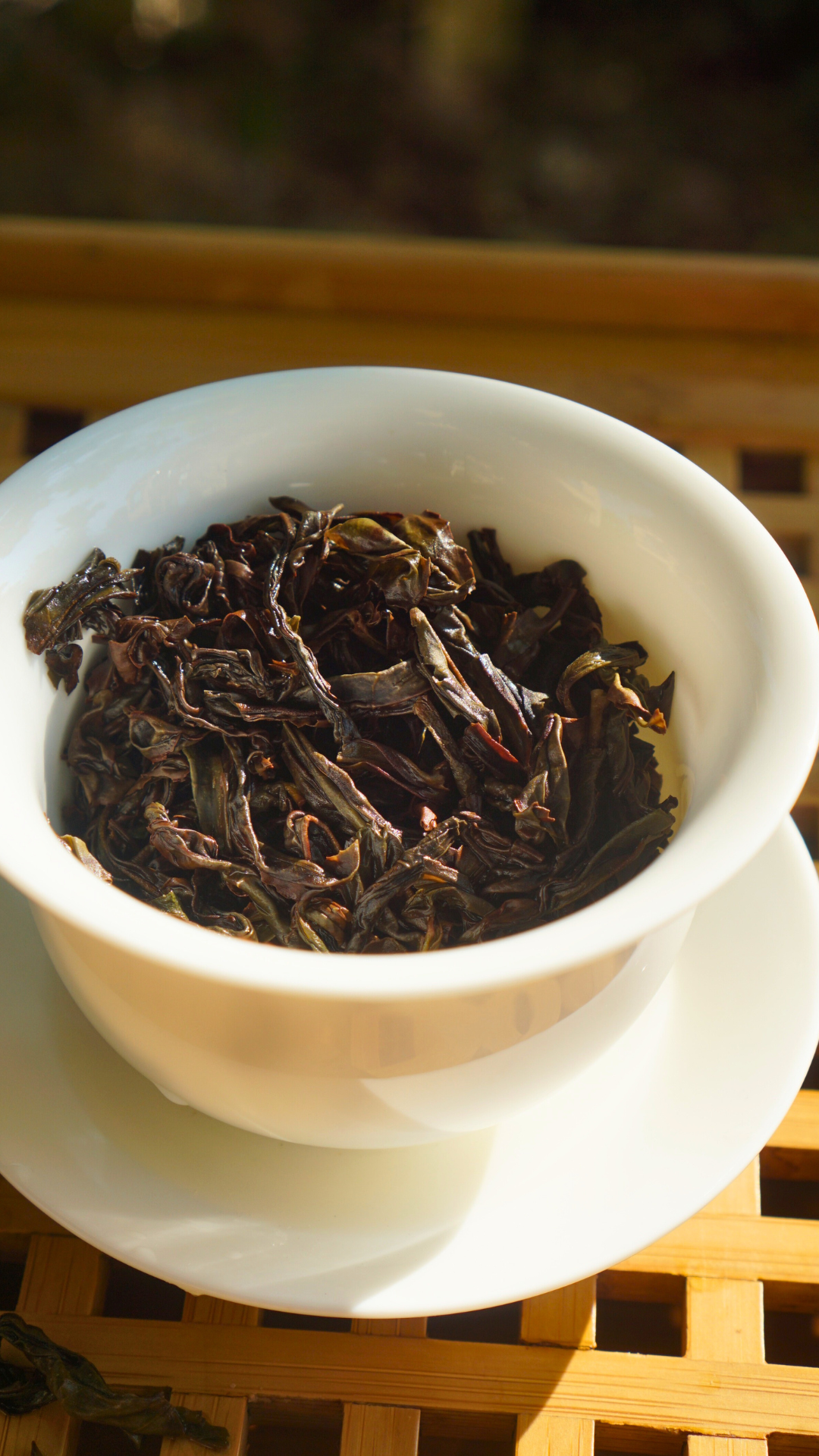
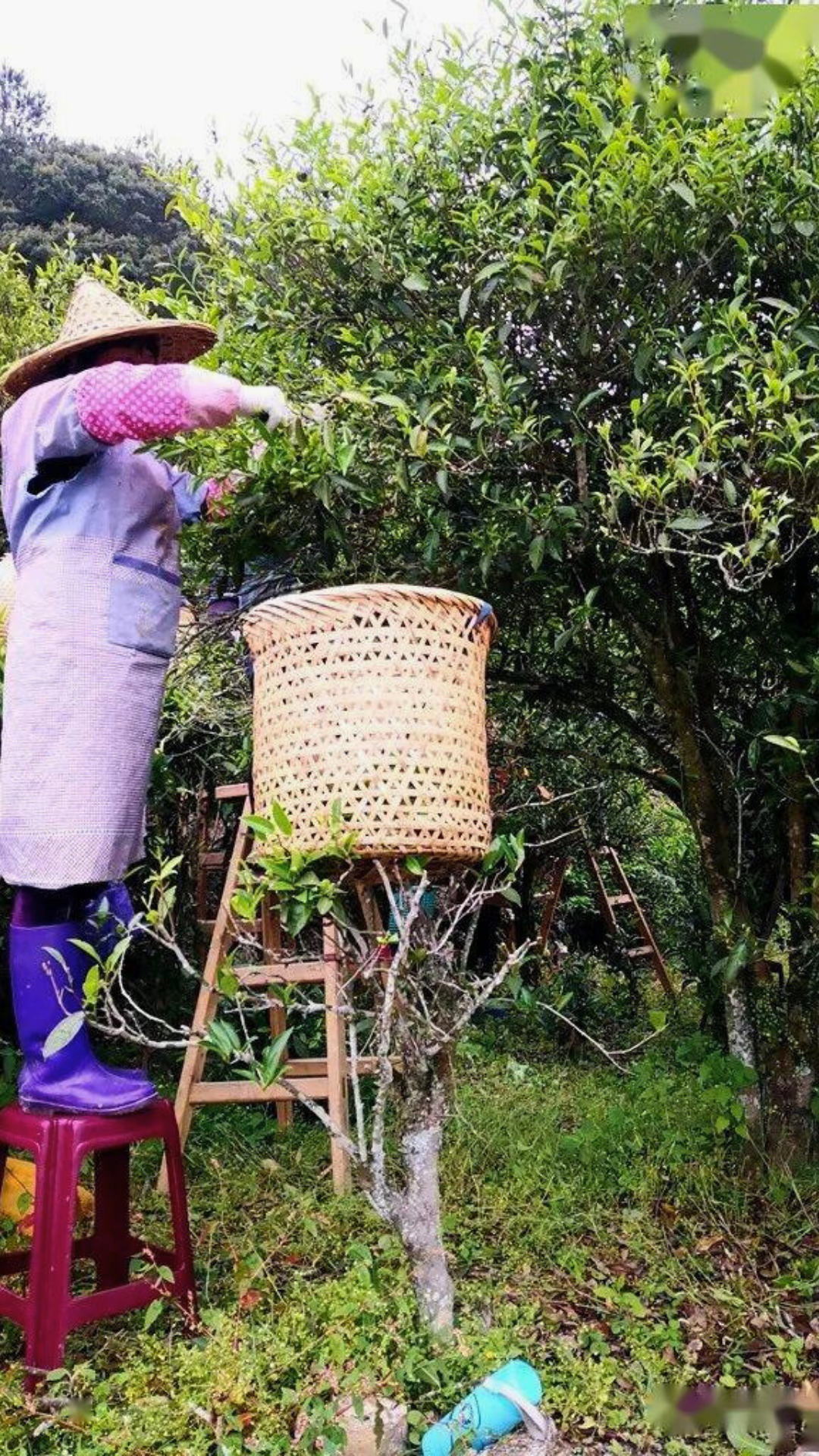
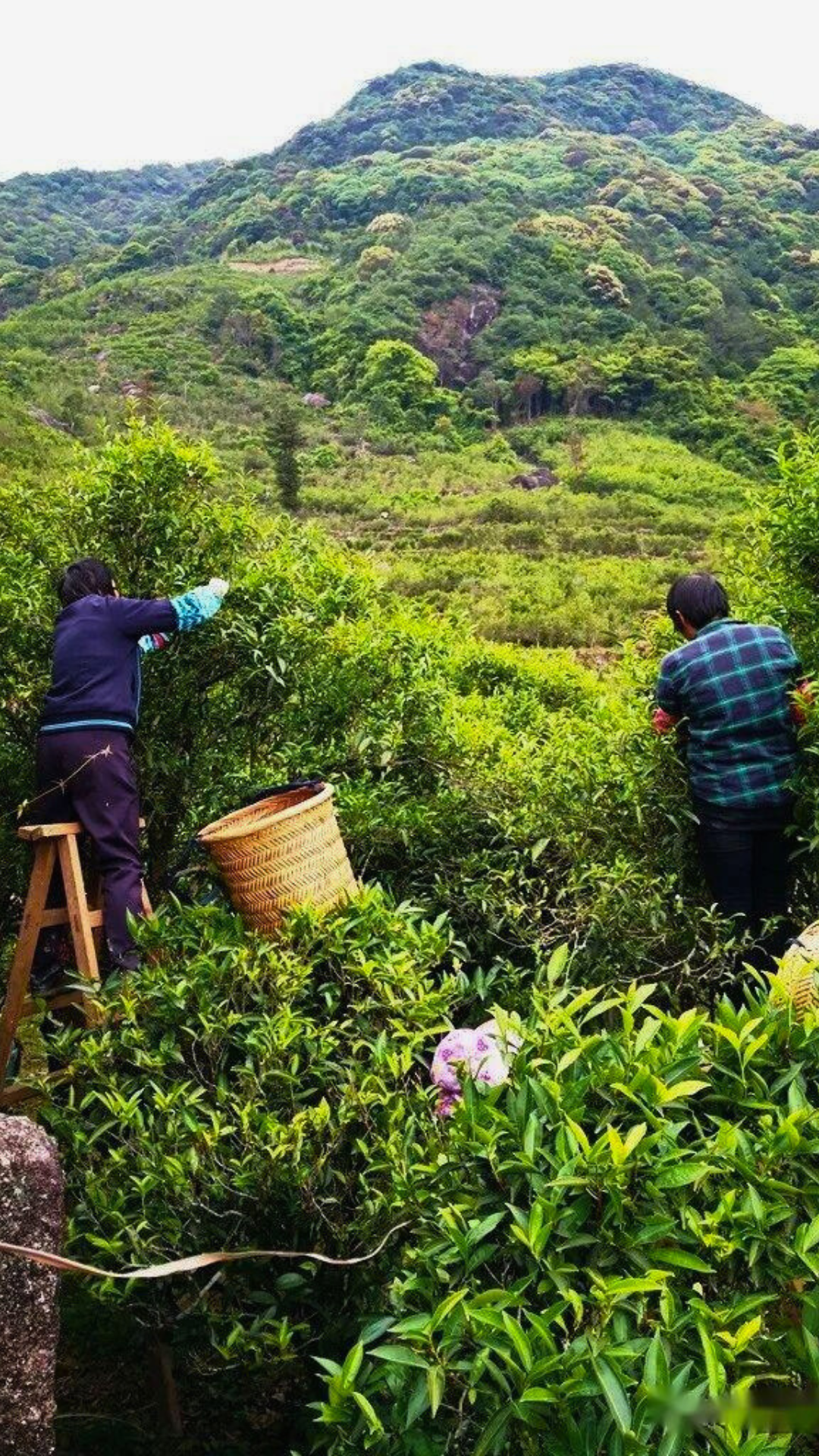
I really enjoy the flavors of this tea. It’s strong enough without having much acidity. I can steep the leaves 7 or 8 times and still get a decent flavor.
茶真赞哦,茶气真猛,有丛味,绝对系老丛茶!正味啊!
Unlike wuyi tea, this shuixian is noticeably more aromatic. It's a fresh fragrance, not a sweet one, closer to a floral scent—so delicious!

